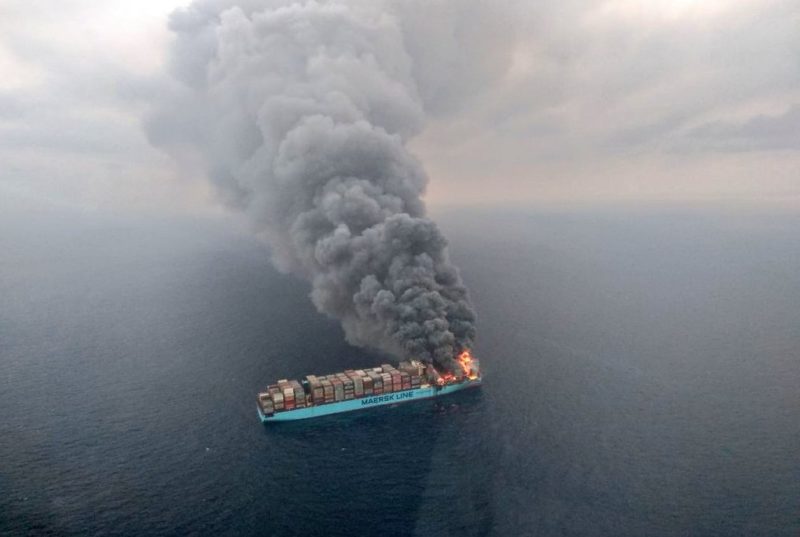Containership ‘Maersk Honam’ on fire in 2018, suspected IMDG Code violation.
Image Source: Indian Coast Guard (GOFL India)
Introduction
Members will be aware that IMO Rules are constantly being reviewed and updated in line with user experience, technological advances and changes in safety and environmental policies. Frequent updating is essential but keeping up with rule changes imposes significant burdens on both shipboard staff and shore management. This Risk Bulletin is intended to lighten the burden on Members by providing a synopsis of the three important amendments to pre-existing IMO conventions and codes which will come into force in 2022.
Background
It is of vital importance that ship managers, DPAs and masters are kept up to date with all applicable IMO rule changes for international trade vessels and NCVS rule changes for domestic trade vessels. Failure to do so may cause a vessel to be considered as being in breach of IMO and/or flag state regulatory compliance obligations. Consequences may include the vessel being detained by Port State Control.
Easy to access IMO Rule change information is available from the Witherby Publications webpage Shipping Regulations and Guidance. Witherby work closely with the IMO and the International Chamber of Shipowners (ICS). They offer a free e-mail newsletter weekly update of IMO and flag state regulation. MM encourages all of their Members to take advantage of this service.
IMO Rule Changes Coming into Force in 2022
There are three IMO Rule changes which will come into force during 2022. They consist of amendments to:
- MARPOL Annex VI – which regulates the prevention of air pollution by ships and energy efficiency and the issue of International Air Pollution Prevention (IAPP) and International Energy Efficiency (IEE) Certificates.
- IMDG Code – which facilitate the SOLAS Chap. VII, Part A, carriage of packaged dangerous goods by sea regulations and the issue of a Document of Compliance for Ships (DCS) carrying Dangerous Goods in Packaged Form.
- Ballast Water Management (BWM) Convention 2004 – which regulates the ballasting and de-ballasting processes of ships, including the installation of an approved BWM treatment system. The goal being to eliminate the risk of invasive aquatic organisms spreading from one part of the world to another.
The three amendments above and their regulatory compliance requirements are summarised as below. Links to IMO resolutions and circulars, which provide the full text of the amendments, are included to assist their incorporation into SMS manuals and procedures.
MARPOL Annex VI – amendments available at IMO RESOLUTION MEPC.324(75)
- Entry into force of amendments on 1 April 2022
- Applicable to all ships in both domestic and international trade, unless otherwise specifically stated in Annex VI to the contrary.
- Update and add to the procedures for sampling and verification of the sulphur content of fuel oil and the assessment of a vessel’s Energy Efficiency Design Index (EEDI) and fuel consumption targets.
- With respect to sampling, the amendment updates the processes for both in-use and on-board fuel oil sampling in accordance with previously established IMO guidelines.
- Fuel samples shall be sealed by the representative of the competent authority [usually Port State Control] with a unique means of identification and installed in the presence of the ship’s representative. The ship shall be given the option of retaining a duplicate sample.
- Sampling points must be situated and constructed in accordance with the amended requirements. A time limit for sample point retrofit requirements for vessels built before 1 April 2022 is provided.
- Sample analysis must be accomplished [preferably by an independent laboratory, with a ship’s representative in attendance] to establish that the fuel meets specified sulphur content requirements.
- With reference to the EEDI for each ship, the Flag State Administration shall report to the IMO both the required and the attained EEDI values. The EEDI attained values must accord with the updated MARPOL Annex VI table. This refers to ship type and size and specifies the related EEDI reduction target expressed as percentage reductions during staged phases to Jan 2025 and beyond.
IMDG Code – amendments available at IMO RESOLUTION MSC.477(102)
- Entry into force of amendments on 1 June 2022.
- Applicable to all ships regulated by the International Convention for the Safety of Life at Sea, 1974 (SOLAS), as amended, and which are carrying dangerous goods as defined in regulation 1 of part A of chapter VII of SOLAS.
- The amendments provide a complete text replacement of the International Maritime Dangerous Goods (IMDG) Code 2018 which will soon become obsolete.
- The IMDG Code 2020 edition consists of three volumes. It can be purchased directly from the IMO or nautical publication sellers.
NOTE: The text of the IMDG Code 2020 provided by the link above is labelled as ‘Not for Commercial Use’. As such, a copy may not be accepted by Port State Control as being compliant with IMO requirements. - A summary of the changes made to the IMDG Code is available from the Council on Safe Transportation of Hazardous Articles (COSTHA). These changes include new information on the dangers of lithium batteries which have already caused a number of fires in electric powered vehicles on board ferries, ropax vessels and car carriers.
NOTE 1: At the time this Risk Bulletin was being prepared, the car carrier ‘FELICTY ACE’ and the ferry ‘EUROFERRY OLYMPIA’ were both on fire with all crew and passengers evacuated. The causes of the fires are as yet unknown. However, it will not be surprising if the ignition source is ultimately traced to an electric vehicle lithium battery fault and/or the charging of such a battery.
NOTE 2: Members who operate ferries and ro-pax vessels are referred to MM Risk Bulletin No. 51 Fires on Passenger Ferries and Ro-Pax Vessels: Hazards and Precautions. This RB includes safety advice on the carriage of electric vehicles.
Ballast Water Management (BWM) Convention 2004 – amendment available atIMO Resolution MEPC.325(75)
- Entry into force of amendment on 1 June 2022.
- Applicable to all vessels engaged in international trade (including submersibles, floating craft, floating platforms, FSUs and FPSOs) using ballast water.
- Vessels with a gross tonnage exceeding 400 GT will need approval of their BWM plan after a survey in order to obtain a BWM Certificate. Ships with a gross tonnage below 400 GT must have an approved BWM plan
- Not applicable to:
- Vessels not designed or constructed to carry ballast water, or
- Vessels that only operate in local waters of a single coastal state, or – with flag state approval – in local waters of a single coastal state combined with voyages to and from international waters.
- Amendments relate to the sections regarding the commissioning testing by detailed survey of new ballast water management systems and the form of the International Ballast Water Management Certificate.
Lessons Learned: 2018 Dangerous Goods Fire on board ‘MAERSK HONAM’
An example of an IMDG Code initiated catastrophe is provided by the fire in the No. 3 cargo hold of the containership ‘MAERSK HONAM’. The resultant damage was so severe that only the stern section and engine room survived the blaze. Five crew members died. Total losses exceeded USD 137 Million.
The cause of the fire was investigated by the Transport Safety Investigation Bureau (TSIB), Ministry of Transport, Singapore. The TSIB report findings were that the fire was most likely caused by exothermic decomposition within 1,000 tonnes of Sodium Dichloroisocyanurate Dihydrate (SDID) stowed in 54 containers underdeck, inside No.3 cargo hold.
SDID is a chlorinating agent listed in the IMDG Code as IMDG Class 9 ‘Miscellaneous Dangerous Good’. However, the TSIB’s SDID testing showed that SDID can be highly oxidizing and, as such, has the potential for exothermic decomposition when stowed in large quantities. This potential reaction is the same as the notorious self-heating compound Calcium Hypochlorite, IMDG Code Class 5.1 ‘Oxidising Substance’, which is used for identical industrial purposes.
Calcium Hypochlorite is required to be stowed in accordance with IMDG Code Special Provision 314.2 which stipulates that:
“During the course of transport, these substances shall be shaded from direct sunlight and all sources of heat and be placed in adequately ventilated areas.”
This is in stark contrast to SDID, IMDG Code Class 9, for which the IMDG Code provided no advice regarding its potential for oxidisation and exothermic decomposition and advised no special stowage provisions whatsoever.
The TSIB’s assessment was that the shipper’s declaration of the SDID cargo as ‘IMDG Code Class 9, may have been due to their testing of SDID in only small quantities. However, the potential for the rapid decomposition of SDID when packed closely – at about 20 m. tons in each shipping container – could have been much higher, particularly if excessive water content or foreign materials were present the cargo. This possibility was not recognised or explained in the IMDG Code.
The TSIB recommended a number of regulatory revisions to prevent recurrence, including:
- Reviewing the proper classification of SDID within the IMDG Code. *
- Calling on carriers to treat SDID in the same way as calcium hypochlorite i.e., stowed on deck and protected from sunlight.
- Requiring temperature sensors in cargo holds connected to the ship’s fire detection system.
- Employing specially designed cargo containers for IMDG goods, fitted with appropriate internal firefighting equipment that would self-activate in the event that the temperature in the container went too high.
- Reviewing SOLAS firefighting standards for container ships to address the risk of cargo hold fires.
*NOTE: A review of the IMDG Code 2020 Edition text at Part 3, Annex 2, shows that there does not appear to have been any revision of SDID classification which is still listed as a Class 9 ‘Miscellaneous Dangerous Good’ and a UN No. 3077 ‘Environmentally Hazardous Substance’ with no remarks in the ‘Properties and Observations’ reporting column and no special carriage on deck requirement.
An important issue, not addressed by the TSIB, was highlighted by a well-known firm of marine surveyors who attended the casualty. This was that the complex problem of dangerous goods fires on ships will never be resolved as long as cargo shippers continue to be allowed to effectively ‘self-certify’ their own cargoes when completing dangerous goods declaration and material safety description forms. This is a critical issue which all shipowners, their DPAs and masters must be alert to. If in doubt, they should obtain independent IMDG Code expert assistance to check and assess the technical accuracy and validity of all such shipper declarations.
Conclusion and Takeaway
Non-compliance with or misunderstandings of the IMDG Code by shippers and/or ships’ crew provide numerous examples of huge losses from cargo destruction, vessel loss and crew deaths due to fire and explosion. These incidents have occurred primarily on-board container ships, passenger ferries, ro-pax vessels and car carriers. Members who operate such vessels must therefore take special due diligence precautions when carrying dangerous goods, inclusive of electric vehicles.
Fortunately, non-compliance with MARPOL Annex VI and the BWM Convention does not usually generate risks of immediate death and destruction. However, this type of non-compliance does provide numerous examples of liabilities and losses arising out of Port State Control detention and fines arising from criminal prosecution. Such incidents can be very expensive as well as very harmful to a shipowner’s commercial and Port State Control inspection reputation.
All of the non-compliance situations referred to above must of course be avoided. MM’s recommendations to its members are, that with respect to the upcoming IMO Rule changes in 2022, they should:
- Raise Awareness by ensuring that their ship managers, DPAs and masters are provided with a copy of this Risk Bulletin.
- Confer with Flag State & Class toclarify and confirm the requirements of the upcoming 2022 amendments to the IMDG Code, MARPOL Annex VI and the BWM Convention and their application to the Member’s fleet.
- Update ISM Code SMS Manuals by instructing their ship managers and DPAs to review and ensure that the SMS Manuals and Procedures for all of the vessels in their fleet are updated to include the requirements imposed by the upcoming 2022 amendments to the IMO conventions and/or any similar amendments to NCVS regulations for domestic vessels.
- Consider Supplementary Training (exceeding STCW minimum requirements)for ship crew and shore-based staff to improve their understanding of the aforesaid regulatory changes and compliance requirements, together with the loss minimisation and the associated safety and productivity benefits.


